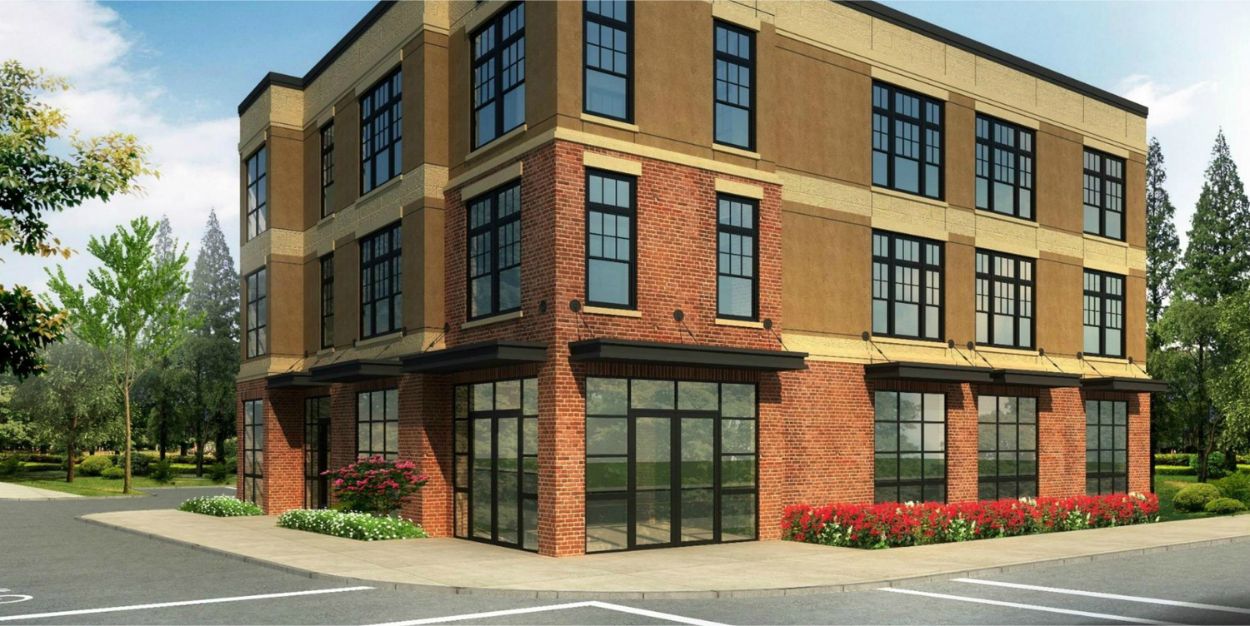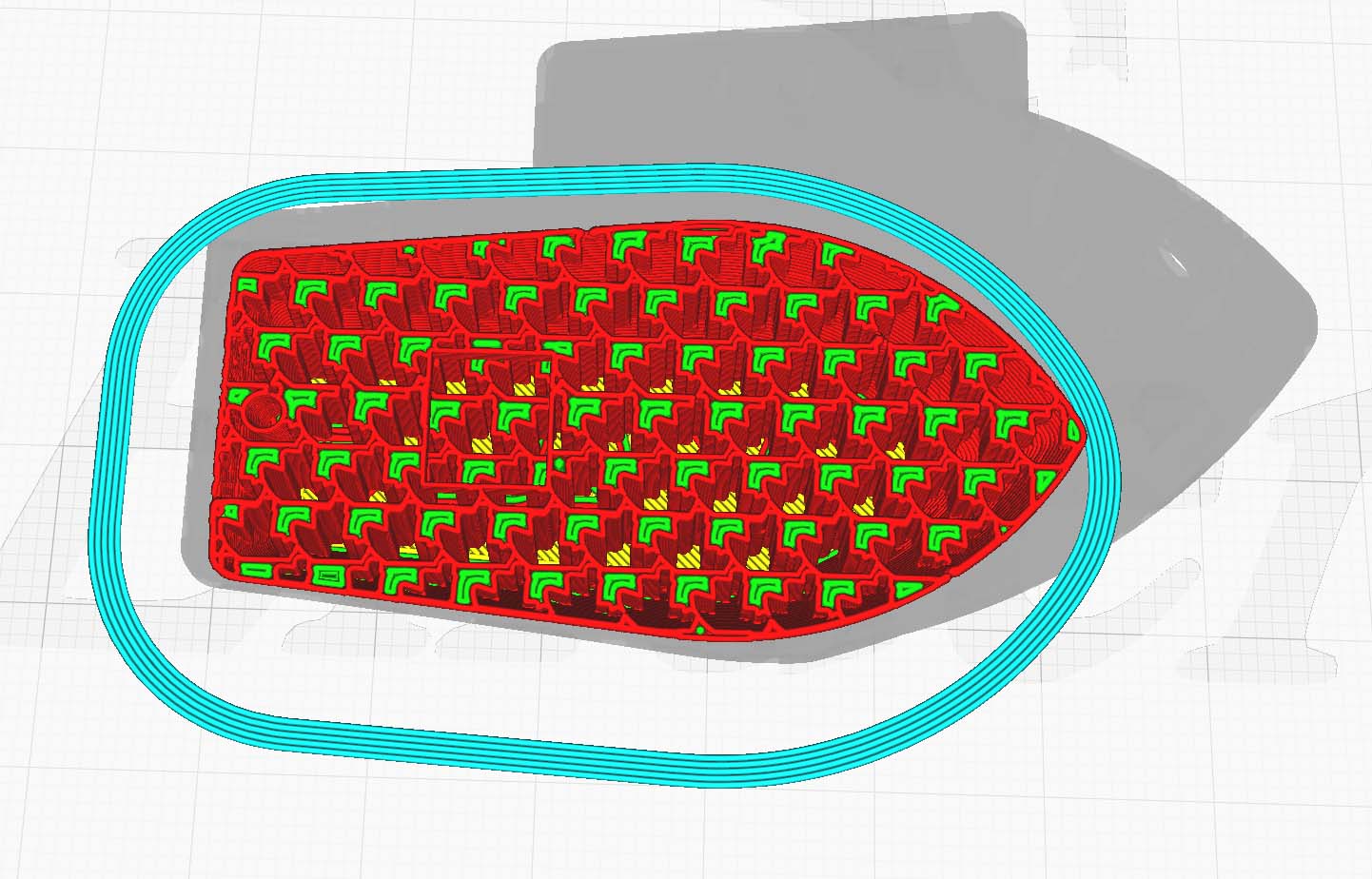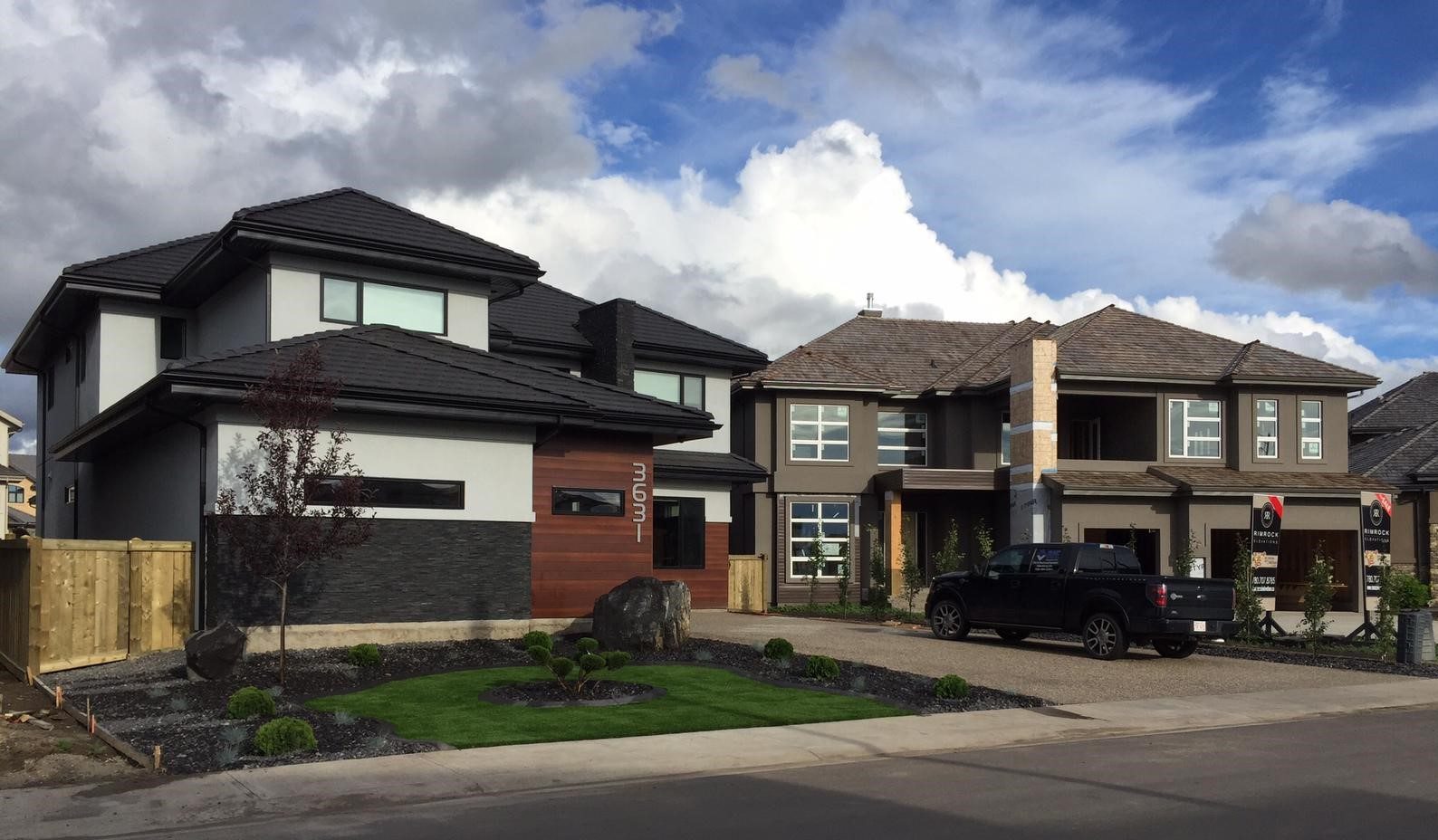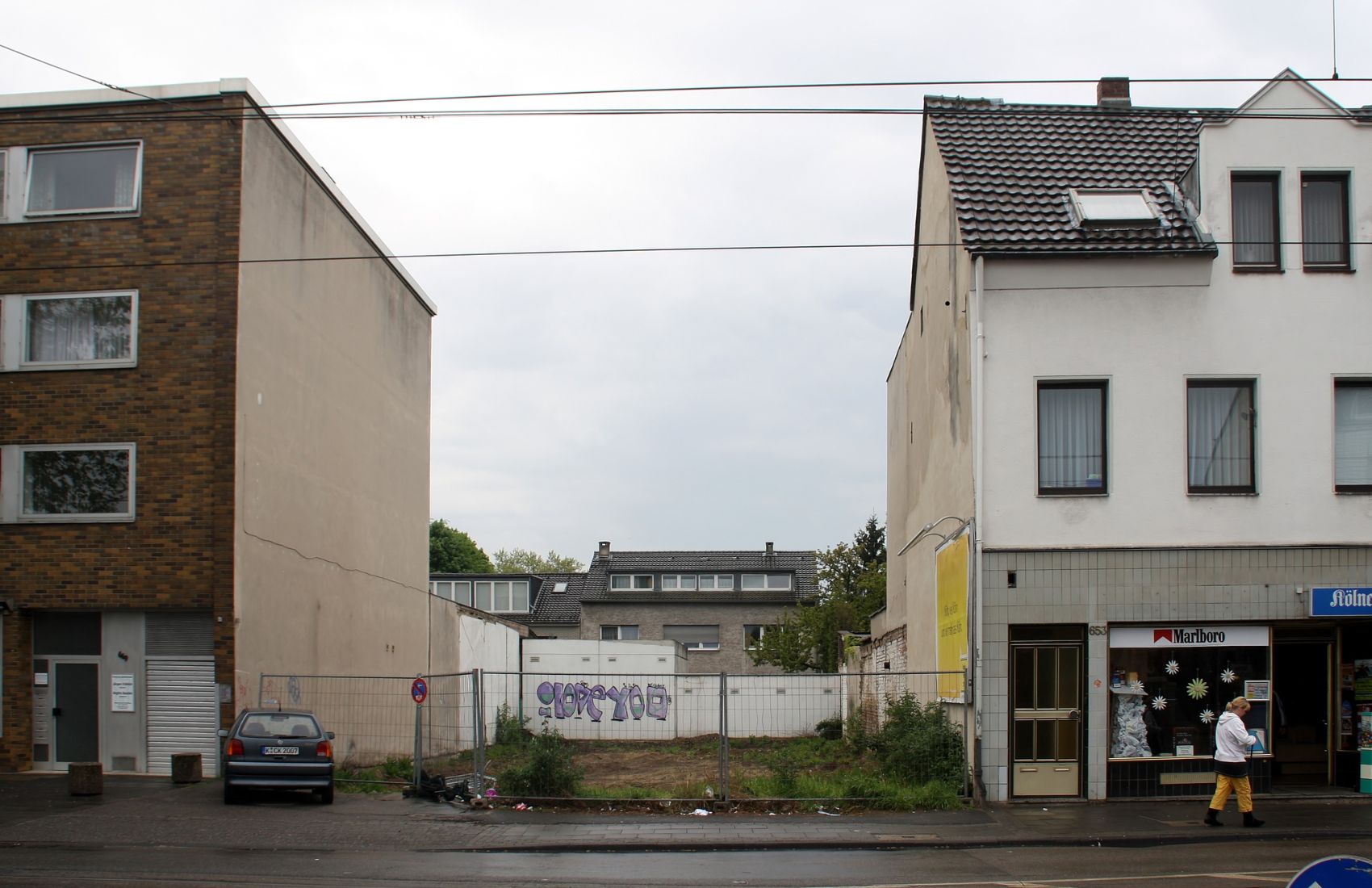Home>Garden Essentials>What Makes Large Mixed-Use Infill Projects Risky


Garden Essentials
What Makes Large Mixed-Use Infill Projects Risky
Modified: March 7, 2024
Discover the potential risks associated with large mixed-use infill projects and how they can impact your garden.
(Many of the links in this article redirect to a specific reviewed product. Your purchase of these products through affiliate links helps to generate commission for Storables.com, at no extra cost. Learn more)
Introduction
Welcome to the world of large mixed-use infill projects! These ambitious ventures combine residential, commercial, and often recreational spaces to revitalize urban areas and create vibrant communities. However, beneath the surface of their grandeur lies a multitude of risks that can make these projects challenging and complex to navigate.
Large mixed-use infill projects are characterized by their scale and scope. They typically involve the redevelopment of large tracts of land in densely populated urban areas, bringing together a mix of residential, commercial, and recreational uses. With the potential to transform underutilized or blighted areas into thriving and desirable destinations, these projects have gained popularity in recent years.
From towering residential towers to bustling retail spaces and lush green parks, these projects aim to create self-contained communities where people can live, work, and play. However, the path to achieving these grand visions is not without its hurdles.
In this article, we will explore the factors that contribute to the riskiness of large mixed-use infill projects and discuss mitigation strategies to manage these risks effectively. By understanding the challenges associated with these projects, developers, investors, and other stakeholders can better navigate the complexities and increase the chances of success.
Key Takeaways:
- Large mixed-use infill projects come with risks, but thorough planning, community engagement, and experienced teams can mitigate challenges and increase the likelihood of successful, vibrant urban transformations.
- Understanding market demand, aligning with economic conditions, and ensuring financial stability are crucial for large mixed-use infill projects to thrive and benefit communities and stakeholders.
Read more: What Is Mixed-Use Zoning
Definition of Large Mixed-Use Infill Projects
Before diving into the intricacies of large mixed-use infill projects, let’s first establish a clear understanding of what they entail. Infill development refers to the process of utilizing vacant or underutilized land within already developed areas. This approach aims to maximize the use of available space and promote urban revitalization.
A large mixed-use infill project takes this concept a step further by incorporating a variety of land uses within a single development. These projects typically involve the integration of residential, commercial, and sometimes recreational or public spaces, creating a dynamic and diverse environment.
Residential elements in large mixed-use infill projects can range from apartments and condominiums to townhouses or even single-family homes. These residential units are often accompanied by retail spaces, offices, restaurants, entertainment venues, and public amenities like parks or plazas.
The key idea behind large mixed-use infill projects is to create a self-sustaining community where residents can live, work, and enjoy leisure activities within close proximity. By providing a mix of residential and commercial spaces, these projects aim to offer convenience, walkability, and a sense of community.
Furthermore, large mixed-use infill projects often prioritize sustainable design and environmental considerations. They may incorporate green building techniques, utilize renewable energy sources, and implement efficient transportation systems to minimize environmental impact and promote a healthier and greener lifestyle.
Overall, large mixed-use infill projects represent a shift towards more comprehensive and integrated approaches to urban development. They offer the potential to transform neglected areas into vibrant, dynamic neighborhoods, attracting residents and visitors alike.
Now that we have a clear understanding of what constitutes a large mixed-use infill project, let’s delve into the factors that contribute to their riskiness.
Factors Contributing to the Riskiness of Large Mixed-Use Infill Projects
Undertaking a large mixed-use infill project comes with numerous risks and challenges that developers and investors must navigate. Understanding these factors is crucial for effectively managing and mitigating potential pitfalls. Here are some key contributors to the riskiness of large mixed-use infill projects:
- Complex Project Approval Process: Obtaining the necessary approvals and permits for large mixed-use infill projects can be a lengthy and intricate process. This involves navigating through layers of regulations, environmental assessments, and community consultations. Delays in the approval process can significantly impact project timelines and increase costs.
- Financial Challenges: Large mixed-use infill projects often require substantial financial investments. Acquiring the necessary funding can be challenging, particularly for developers who may face difficulties securing loans or attracting investors. Financial constraints can potentially jeopardize the feasibility and progress of the project.
- Community and Stakeholder Opposition: Introducing a large-scale development into an existing neighborhood can trigger concerns and resistance from local communities and stakeholders. Opposition may stem from issues such as increased traffic, changes to the character of the area, or concerns about affordable housing. Addressing these concerns and fostering positive community relations is crucial to the success of the project.
- Construction and Design Complexity: Large mixed-use infill projects often involve intricate designs and complex engineering considerations. Integrating various uses within a limited space requires careful planning and coordination. Additionally, working within densely populated areas presents challenges for logistics, access, and construction management.
- Infrastructure and Environmental Considerations: Upgrading or establishing the necessary infrastructure, such as transportation systems, utilities, and parks, can pose significant challenges in large mixed-use infill projects. Environmental impacts, including stormwater management, noise pollution, and carbon emissions, should also be addressed to ensure sustainable development practices.
- Market and Economic Factors: Large mixed-use infill projects are subject to market fluctuations and economic uncertainties. The demand for residential and commercial spaces, as well as the viability of retail and entertainment offerings, can impact the financial performance of the project. Economic downturns may influence rental or occupancy rates and affect the project’s profitability.
These factors collectively contribute to the riskiness of large mixed-use infill projects. However, by implementing appropriate strategies and proactive mitigation measures, developers and investors can effectively manage these risks and increase the likelihood of successful project execution. In the next section, we will explore some of these strategies in more detail.
Complex Project Approval Process
One of the significant challenges in developing large mixed-use infill projects is navigating the complex project approval process. Obtaining the necessary permits and approvals from various regulatory bodies and stakeholders can be a time-consuming and intricate endeavor. Here are some key factors that contribute to the complexity of the project approval process:
- Regulatory Compliance: Developing large mixed-use infill projects requires adherence to numerous regulations and guidelines. These can include zoning ordinances, building codes, environmental impact assessments, and historic preservation requirements. Compliance with these regulations while integrating multiple land uses can be a daunting task that requires experienced legal and planning professionals.
- Environmental Considerations: Many large mixed-use infill projects involve the redevelopment of previously developed land. This can raise environmental concerns, such as contamination from previous activities, stormwater management, and protection of natural habitats. Conducting thorough environmental assessments and developing mitigation strategies is essential to address these concerns and obtain the necessary environmental approvals.
- Community Consultation: Engaging with the local community and stakeholders is a critical aspect of the project approval process. Involving the community early on and incorporating their input can help address concerns, build support, and increase the likelihood of gaining approval. Public meetings, workshops, and surveys can facilitate constructive dialogue and ensure the project aligns with community needs and aspirations.
- Governmental and Agency Coordination: Large mixed-use infill projects often require coordination and collaboration with multiple governmental agencies and departments. These can include planning departments, transportation authorities, water and sewer departments, and others. Ensuring effective communication and coordination among these stakeholders is crucial to streamline the approval process and prevent unnecessary delays.
- Permitting and Fees: Securing the necessary permits for construction, occupancy, signage, and other activities is a critical step in the project approval process. Understanding the permitting requirements and associated fees is essential for budgeting and project feasibility. Delays in obtaining permits or unexpected fees can significantly impact project timelines and financial viability.
To successfully navigate the complex project approval process, developers of large mixed-use infill projects should engage experienced professionals, such as architects, planners, and lawyers, who are well-versed in local regulations and processes. Developing a comprehensive strategy that addresses potential obstacles and incorporates community input can streamline the approval process and increase the chances of project success.
Financial Challenges
One of the significant factors contributing to the riskiness of large mixed-use infill projects is the presence of financial challenges. These projects often require substantial investments of capital, and securing funding can be a complex and uncertain process. Here are some key financial challenges faced by developers:
- Funding Acquisition: Securing the necessary financing for large mixed-use infill projects can be a daunting task. Traditional lenders may view these projects as high risks due to their size, complexity, and the uncertainties associated with market demand. Developers often need to explore alternative sources of funding, such as private equity, joint ventures, or government incentives and grants.
- Risk Allocation: Large mixed-use infill projects involve multiple stakeholders, each with different financial interests. Allocating risks and rewards among developers, investors, and other parties can be challenging. Balancing the potential profits and risks is crucial to attract investors and ensure project sustainability.
- Cost Overruns and Delays: Large mixed-use infill projects are susceptible to cost overruns and construction delays, which can strain the project’s financial resources. Unforeseen site conditions, design changes, or labor and material shortages can significantly impact the project budget. Adequate contingency plans and thorough project management are necessary to mitigate these risks.
- Market Risks: Economic conditions and market demand can pose significant financial risks for large mixed-use infill projects. Changing market dynamics, such as a downturn in the real estate market or shifts in consumer preferences, can affect the project’s profitability and viability. Conducting thorough market studies and adopting a flexible approach that adapts to market fluctuations is crucial.
- Operational Sustainability: Large mixed-use infill projects require long-term financial sustainability beyond the initial construction phase. Ensuring a steady revenue stream from residential and commercial tenants is essential for covering ongoing operational costs, maintenance, and debt service. Creating a sound financial management plan is vital to ensure the project’s long-term success.
To address these financial challenges, developers of large mixed-use infill projects should employ thorough financial feasibility studies before embarking on a project. These studies should assess the market demand, evaluate potential returns on investment, and identify potential risks and mitigation strategies. Working with experienced financial advisors and stakeholders who have a track record in successful large-scale developments can also help navigate financial hurdles.
Furthermore, establishing strong relationships with financing institutions, demonstrating a clear value proposition, and showcasing a well-structured business plan can increase the chances of securing funding. Collaboration and partnerships with strategic investors or public-private partnerships may also provide opportunities for shared risks and financial support.
By addressing these financial challenges proactively and implementing sound financial management strategies, developers can mitigate risks and enhance the financial viability of large mixed-use infill projects.
Read more: What Is A Dovetail Infill Plane Used For
Community and Stakeholder Opposition
Large mixed-use infill projects often face opposition and resistance from the local community and various stakeholders. Community and stakeholder opposition can pose significant risks to the success of these projects and create additional complexities. Understanding and addressing these concerns is crucial to gaining community support and minimizing potential roadblocks. Here are some common factors contributing to community and stakeholder opposition:
- Increased Traffic and Congestion: One of the primary concerns raised by the community is the potential increase in traffic and congestion resulting from large mixed-use infill projects. Residents often worry about the impact of additional vehicles on their neighborhood streets and the strain it could put on existing infrastructure. Developers should work closely with transportation authorities to address traffic concerns through comprehensive traffic studies and the implementation of mitigation measures such as new road or transit infrastructure.
- Change to the Neighborhood Character: Significant changes to the neighborhood’s character can elicit opposition from residents who fear losing the unique qualities and charm of their community. This can include concerns about architectural design, building heights, density, or the preservation of historic elements. Engaging with the community early on in the project planning process and incorporating their input can help address these concerns and ensure that the development aligns with the existing neighborhood character.
- Impact on Affordable Housing: The potential displacement of low-income residents due to rising property values and rents is another common concern voiced by community members. Large mixed-use infill projects often result in a mix of market-rate and luxury housing, making affordable housing provisions critical. Developers can work with local housing authorities or nonprofit organizations to incorporate affordable housing units within the project or provide financial contributions towards affordable housing initiatives.
- Noise and Environmental Concerns: Construction noise, as well as potential environmental impacts such as air and water pollution, can generate opposition from nearby residents. Implementing strict construction management practices, utilizing noise mitigation measures, and adopting sustainable building techniques can help alleviate these concerns and show a commitment to minimizing the project’s environmental footprint.
- Lack of Community Engagement: Failure to engage and involve the local community and stakeholders early on in the project can lead to mistrust and opposition. Implementing effective community engagement strategies, such as hosting public meetings, conducting surveys, and establishing community advisory groups, can foster open communication, address concerns, and build support for the project.
To mitigate community and stakeholder opposition, developers should proactively engage with the community from the initial stages of the project. Open and transparent communication, active listening, and incorporating community input into the project design and development process are crucial. By addressing concerns, demonstrating the project’s benefits to the community, and creating opportunities for ongoing dialogue, developers can gain support and navigate potential obstacles.
Working with local community groups and stakeholders, along with hosting public information sessions, can also help build trust and foster collaboration. These efforts can result in projects that are better aligned with community needs and aspirations, enhancing the chances of success.
Construction and Design Complexity
The construction and design complexity of large mixed-use infill projects present significant challenges for developers and stakeholders. These projects often involve intricate designs and require coordination between various disciplines. Here are some key factors contributing to the construction and design complexity of large mixed-use infill projects:
- Multifaceted Design Considerations: Large mixed-use infill projects typically incorporate a mix of residential, commercial, and sometimes recreational spaces. Balancing the needs and requirements of these different uses within a limited space can be a complex task. Architects and designers must navigate the challenges of zoning requirements, building codes, and accessibility regulations to create an efficient and harmonious design.
- Integration of Building Systems: Large mixed-use infill projects often require the integration of various building systems, such as HVAC, electrical, plumbing, and fire protection, across different uses. Coordinating these systems to ensure efficient operation and occupant comfort is crucial. Additionally, incorporating sustainable design elements and energy-efficient systems can further complicate the construction and design process.
- Structural Considerations: Tall residential or mixed-use buildings require careful structural engineering to ensure their stability and safety. Integrating different uses and functionalities within the same structure can add complexity to the design. Structural engineers must account for factors such as wind loads, seismic considerations, and the unique requirements of each use.
- Logistics and Access Challenges: Constructing large mixed-use infill projects in densely populated urban areas presents logistical challenges. Limited space for construction staging, limited access to the site, and coordination with existing infrastructure can complicate the construction process. Strategies such as just-in-time delivery of materials, off-site fabrication, and effective traffic management become crucial to minimize disruption to the surrounding community.
- Phasing and Coordination: Large mixed-use infill projects often involve multiple phases of construction, with different buildings or components being developed at different times. Coordinating the sequencing of construction activities, ensuring proper integration between phases, and maintaining a cohesive design throughout the project becomes a significant undertaking.
To manage the construction and design complexity of large mixed-use infill projects effectively, developers should collaborate with multidisciplinary teams of professionals, including architects, engineers, and construction managers. These experts can provide valuable insights and expertise in navigating the challenges associated with these projects.
Early engagement of the project team, including design and construction professionals, can facilitate efficient coordination and planning. Adopting digital tools for design and construction management can aid in visualizing the project, detecting clashes, and streamlining communication between various stakeholders.
Furthermore, maintaining clear lines of communication between the project team, contractors, and regulatory authorities is crucial throughout the construction process. Regular project meetings, progress updates, and proactive issue resolution can help address challenges promptly and ensure the smooth execution of the project.
By proactively addressing the construction and design complexity of large mixed-use infill projects, developers can mitigate risks, improve efficiency, and deliver successful outcomes.
Infrastructure and Environmental Considerations
Large mixed-use infill projects require careful consideration of infrastructure and environmental factors. These projects often involve the development or improvement of essential infrastructure and must be designed in an environmentally responsible manner. Here are key considerations in infrastructure and environmental aspects:
- Transportation Infrastructure: Large mixed-use infill projects can place additional demands on transportation systems, including roads, parking, and public transit. Developers need to assess the existing infrastructure’s capacity and determine necessary upgrades or new additions to accommodate increased traffic from residents, employees, and visitors.
- Utilities and Services: Integrating multiple land uses within a single project requires careful planning for utility connections such as water, sewer, and electricity. Developers must coordinate with utility providers to ensure the availability and capacity of these services to support the project’s needs. Implementing energy-efficient systems and incorporating renewable energy sources can further enhance the sustainability of the project.
- Stormwater Management: Large mixed-use infill projects can have significant impacts on stormwater runoff patterns. Implementing efficient stormwater management strategies, such as green infrastructure, retention ponds, or permeable paving, is crucial to prevent flooding, reduce the strain on existing sewer systems, and protect water quality.
- Environmental Impact: Developing large mixed-use projects in urban areas requires careful attention to environmental impacts. Environmental assessments should be conducted to identify potential risks and develop mitigation strategies. These projects can incorporate sustainable design practices, such as green roofs, rainwater harvesting, and native landscaping, to minimize their ecological footprint and promote environmental stewardship.
- Accessibility: Ensuring accessibility for all individuals, including those with disabilities, is essential in large mixed-use infill projects. Developers must comply with local accessibility codes and regulations, providing barrier-free access to buildings, amenities, and public spaces. Incorporating universal design principles from the initial planning stages can promote inclusivity and enhance the project’s value.
- Historic Preservation: In some cases, large mixed-use infill projects may involve the integration or preservation of historic structures or districts. Developers must navigate the complexities of historic preservation regulations and balance the need for modern development with preserving the historical integrity of the area. Collaboration with historic preservation organizations and professional consultants is crucial in creating a harmonious blend of old and new.
Addressing infrastructure and environmental considerations requires a multidisciplinary approach and collaboration with relevant professionals, including civil engineers, environmental consultants, and landscape architects. Early engagement of these experts can help identify potential challenges, develop strategies, and align the project with sustainability goals and community expectations.
Furthermore, developers should engage with local authorities, community organizations, and environmental agencies to ensure compliance with regulations and foster environmental stewardship. Open dialogue, public involvement, and transparent communication can help address concerns and build support for the project’s sustainable development goals.
By prioritizing infrastructure and environmental considerations, developers can create large mixed-use infill projects that are not only economically viable but also contribute positively to the surrounding community and environment.
When considering large mixed-use infill projects, it’s important to thoroughly assess the potential risks involved, such as financial challenges, community resistance, and regulatory hurdles. Conducting a comprehensive risk analysis and developing a solid risk management plan can help mitigate these potential challenges.
Market and Economic Factors
Market and economic factors play a significant role in the riskiness of large mixed-use infill projects. These projects are subject to market fluctuations and economic conditions that can impact their financial viability. Understanding and evaluating these factors is crucial for successful project development. Here are some key market and economic factors to consider:
- Market Demand: The demand for residential, commercial, and retail spaces within the project area is a critical factor. Developers must assess market dynamics, including population growth, employment trends, and consumer preferences. Conducting market feasibility studies can help gauge the potential demand for the project’s offerings and ensure alignment with market needs.
- Competitive Landscape: Examining the competitive landscape is essential to understand existing and future developments in the vicinity. Assessing the supply of similar mixed-use projects and analyzing their market performance can help identify opportunities and potential challenges. Differentiating the project’s offerings and value proposition is crucial to attract tenants, investors, and consumers.
- Financing Availability: The availability and cost of financing impact project feasibility. Developers need to consider interest rates, lending criteria, and investor appetite for large mixed-use projects. Unfavorable financing conditions or difficulty in securing funding can hinder the project’s progress and financial viability.
- Economic Conditions: Economic factors, such as GDP growth, employment rates, and inflation, can influence the success of large mixed-use infill projects. During economic downturns, demand for both residential and commercial spaces may decline, affecting rental rates and occupancy levels. Developers should conduct thorough market analysis considering economic indicators to make informed investment decisions.
- Rental and Occupancy Rates: Rental and occupancy rates directly impact the financial performance of large mixed-use projects. Developers must assess the market’s ability to absorb the proposed residential and commercial spaces and determine realistic rental rates. Monitoring market trends, such as rental rate growth and vacancy rates, is crucial for accurate financial modeling.
- Long-Term Economic Sustainability: Ensuring the long-term economic sustainability of large mixed-use infill projects requires careful analysis of ongoing operational costs, maintenance expenses, and revenue streams. Creating a sustainable business model that considers ongoing management, repairs, and reserves is critical for the project’s financial stability beyond its initial construction phase.
To navigate market and economic challenges, developers should conduct thorough market research and feasibility studies. Engaging market analysts and real estate consultants can provide valuable insights into market trends, demand projections, and competitive dynamics.
Adapting the project’s offerings to align with market demand, maintaining flexibility in design and programming, and conducting regular market assessments are important strategies to mitigate market risks. Working closely with financial institutions, investors, and real estate professionals can also provide access to the right financing sources and expertise.
Ultimately, a thoughtful and well-informed approach that acknowledges market and economic factors throughout the development process can increase the likelihood of a successful and financially sustainable large mixed-use infill project.
Read more: What Is Used As Infill For Timber Frames
Mitigation Strategies for Managing Risks in Large Mixed-Use Infill Projects
While large mixed-use infill projects come with inherent risks, developers and stakeholders can employ various mitigation strategies to effectively manage these risks. By implementing proactive measures, the chances of project success can be significantly increased. Here are some key mitigation strategies:
- Comprehensive Planning and Feasibility Studies: Conducting thorough planning and feasibility studies is crucial before embarking on a large mixed-use infill project. This involves assessing market demand, conducting financial feasibility analyses, and analyzing potential risks and challenges. Identifying risks early on allows developers to devise strategies to address them and make informed investment decisions.
- Engaging with Communities and Stakeholders: Building positive relationships with the local community and stakeholders is essential for project success. Engage in open and transparent communication, listen to community concerns, and incorporate feedback into the project design. By addressing community needs and fostering a sense of ownership and collaboration, developers can gain support and reduce opposition.
- Collaborating with Experienced Project Teams: Assembling a team of experienced professionals is key to overcoming the complexities of large mixed-use infill projects. Engage architects, engineers, planners, and construction managers with a track record of successful similar projects. Their expertise and knowledge will contribute to effective project execution and management.
- Ensuring Sufficient Financial Resources and Risk Allocation: Adequate financial resources are critical for the successful completion of large mixed-use infill projects. Secure funding sources early on and allocate risks among project stakeholders appropriately. Develop a robust financial plan with contingencies to address any unexpected costs or delays that may arise during construction.
- Aligning with Market Demand and Economic Conditions: Continuously monitor market trends and adjust the project to align with market demand. Stay informed about economic conditions that may impact the project’s financial viability. Flexibility in design, programming, and financing can help adapt to changing market conditions and mitigate potential risks.
Additionally, maintaining a proactive approach to risk management throughout the project’s lifecycle is vital. Regularly review and reassess potential risks, develop risk mitigation plans, and monitor progress closely. Establishing effective project management processes, including clear communication, regular reporting, and efficient decision-making, can help identify and address risks in a timely manner.
Furthermore, developers should stay informed about changing regulations and industry best practices. Innovation in construction methods, sustainable design, and technology can help mitigate risks and enhance project efficiency. Networking and knowledge-sharing within the industry can provide valuable insights into emerging trends and solutions.
By implementing these mitigation strategies, developers can navigate the risks associated with large mixed-use infill projects and increase the chances of delivering successful and transformative developments.
Comprehensive Planning and Feasibility Studies
Comprehensive planning and feasibility studies form the foundational step in managing risks for large mixed-use infill projects. These studies are invaluable for developers as they provide critical insights into the project’s potential success and help identify and mitigate potential risks and challenges. Here’s why comprehensive planning and feasibility studies are crucial:
Market Demand Assessment: Conducting a thorough analysis of market demand is essential to understand the need and viability of the proposed project. This includes studying population demographics, consumer preferences, and economic indicators. By assessing the market demand, developers can determine if there is sufficient interest and demand for the proposed mixed-use development, reducing the risk of low occupancy rates or sluggish sales.
Financial Feasibility Analysis: An in-depth financial feasibility analysis helps evaluate the project’s potential profitability and return on investment. This analysis considers construction costs, operating expenses, potential revenue streams, and market conditions. By carefully examining financial viability, developers can identify potential challenges and adjust project parameters, such as unit sizes or rental rates, to ensure the project remains economically viable.
Risk Identification and Mitigation: Comprehensive planning and feasibility studies allow for the identification and assessment of potential risks and challenges. These can include financial risks, regulatory hurdles, community opposition, or construction complexities. By proactively identifying and addressing these risks, developers can develop mitigation strategies to reduce their impact or likelihood of occurrence. This ensures that potential roadblocks are accounted for and minimized during the project’s execution.
Site Assessment and Constraints Evaluation: Detailed site assessment is critical to analyze any environmental, geotechnical, or infrastructure constraints that may impact the project. Understanding these constraints early on can help developers plan effectively, allocate resources appropriately, and incorporate necessary design modifications. This minimizes surprises during the construction process and reduces the risk of costly delays or redesigns.
Legal and Regulatory Compliance: Large mixed-use infill projects must navigate complex legal and regulatory frameworks. Comprehensive planning and feasibility studies involve evaluating zoning laws, building codes, environmental regulations, and other legal considerations. Complying with all regulatory requirements early on mitigates the risk of costly delays or fines during the project implementation phase.
Economic Viability Assessment: Economic viability is a crucial component of comprehensive planning and feasibility studies. By analyzing macroeconomic factors, such as interest rates, inflation rates, and employment trends, developers can forecast the project’s long-term financial sustainability. This assessment ensures that the project aligns with the current and projected economic conditions, reducing risks associated with economic downturns or changing market dynamics.
Comprehensive planning and feasibility studies provide developers with a robust understanding of the project’s potential risks and rewards, allowing them to make informed decisions. These studies enable developers to adapt project parameters if necessary, establish realistic objectives, and develop evidence-backed strategies for successful project execution. By investing time and resources in this crucial step, developers can significantly mitigate risks and increase the chances of delivering a successful and profitable large mixed-use infill project.
Engaging with Communities and Stakeholders
Engaging with communities and stakeholders is a critical mitigation strategy in managing risks for large mixed-use infill projects. Building positive relationships, fostering open communication, and incorporating stakeholder input can help address concerns, gain support, and minimize potential opposition. Here’s why engaging with communities and stakeholders is crucial:
Early Involvement and Transparency: Engaging with communities and stakeholders from the early stages of the project demonstrates a commitment to transparency and inclusivity. By involving them in the planning and decision-making process, developers can build trust and establish a foundation for successful collaboration. This proactive approach allows for the identification of potential concerns or issues at an early stage, minimizing the risk of late-stage opposition or delays.
Community Input and Needs Assessment: Engaging with communities provides an opportunity to gather valuable insights on their desires, needs, and expectations. Conducting surveys, public workshops, or focus groups can help identify community aspirations and concerns. By incorporating community input into the project’s design and programming, developers can align the project with the community’s vision, reducing the risk of resistance or opposition.
Addressing Concerns and Building Support: Community engagement enables developers to address concerns and misconceptions, provide accurate project information, and communicate the project’s benefits to the community. Through open dialogue and clear communication, developers can proactively address perceived negative impacts, such as traffic congestion, environmental concerns, or changes to the neighborhood character. By demonstrating the project’s positive contributions to the community, developers can build support and minimize opposition.
Collaboration with Stakeholders: Engaging with stakeholders beyond the local community, such as government officials, business owners, and community organizations, is equally important. Their involvement can facilitate access to resources, expertise, and funding opportunities. Collaborating with stakeholders enables developers to leverage their support, gather valuable input, and align project goals with broader community and economic development objectives.
Participatory Design and Amenities: Involving communities in the design process allows for the incorporation of amenities and spaces that reflect their needs and aspirations. This participatory approach helps create a sense of ownership and pride in the project. By integrating community-requested amenities, such as parks, public plazas, or cultural spaces, developers can enhance the project’s social value, attract residents, and foster community cohesion.
Continued Communication and Long-Term Relationship Building: Engaging with communities and stakeholders should not be limited to the project’s planning and approval stages. Developers should establish mechanisms for ongoing communication and relationship-building throughout the project’s lifecycle. Regular updates, community meetings, and opportunities for feedback and input help maintain community support and address any emerging concerns or issues that may arise during construction or operations.
Engaging with communities and stakeholders requires a sincere commitment to listening, understanding, and responding to their needs and concerns. By actively involving them in the planning and decision-making process, developers can minimize risks associated with community opposition, negative publicity, or legal challenges. Successful community engagement creates a sense of shared ownership and partnership, leading to the development of projects that are embraced by the community and contribute positively to their well-being.
Collaborating with Experienced Project Teams
Collaborating with experienced project teams is a crucial mitigation strategy for managing risks in large mixed-use infill projects. By assembling a team of professionals with a proven track record in similar projects, developers can benefit from their expertise, knowledge, and insights. Here are key reasons why collaborating with experienced project teams is essential:
Expertise and Knowledge: Experienced project teams bring valuable expertise and knowledge to the table. Architects, engineers, planners, and construction managers with a deep understanding of large mixed-use developments can navigate the complexities and unique challenges these projects present. Their expertise ensures that project designs are well-coordinated, compliant with regulations, and optimized for functionality and usability.
Understanding of Local Regulations and Processes: Local regulations and approval processes can vary significantly from one jurisdiction to another. Experienced project teams are familiar with these intricacies and understand how to navigate the local regulatory landscape. Their understanding of zoning codes, building permits, environmental requirements, and community approval processes helps developers smoothly progress through the various stages of project implementation, minimizing the risk of delays and compliance issues.
Relationships with Local Authorities and Agencies: Established project teams have built relationships with local authorities, government agencies, and other key stakeholders. These relationships can facilitate smoother project approvals, streamline permit applications, and expedite coordination with various departments. Leveraging their established connections can significantly reduce red tape, leading to quicker project delivery and mitigating risks associated with bureaucratic challenges.
Proactive Problem-Solving and Risk Management: Experienced project teams have encountered and successfully resolved numerous challenges inherent in large mixed-use infill projects. They bring a proactive problem-solving mindset, identify potential obstacles early on, and develop mitigation strategies. Their collective knowledge and insights enable developers to navigate risks effectively, adapt to unexpected issues, and reduce the likelihood of cost overruns, delays, or quality issues.
Coordination and Communication: Large mixed-use infill projects involve coordination between multiple stakeholders and disciplines. Experienced project teams excel in fostering effective collaboration and communication among architects, engineers, contractors, and subcontractors. Their ability to manage complex project timelines, coordinate design changes, and facilitate seamless communication helps maintain project momentum, reduce errors, and minimize the risk of rework or misalignment.
Quality Assurance and Compliance: Delivering a high-quality project that meets regulatory standards is essential for the success and long-term viability of large mixed-use infill developments. Experienced project teams ensure that quality control measures, inspections, and compliance certifications are implemented throughout the construction process. Their robust quality assurance protocols reduce the risk of construction defects, safety issues, and subsequent legal or financial liabilities.
Partnering with an experienced project team from the project’s inception brings a wealth of knowledge, specialized skills, and a network of professionals who can support the successful execution of large mixed-use infill projects. Their expertise and collaborative approach contribute to efficient project delivery, minimized risks, and optimized outcomes, ultimately improving the chances of success.
Read more: What Infill Density Should I Use
Ensuring Sufficient Financial Resources and Risk Allocation
Ensuring sufficient financial resources and proper risk allocation is vital for mitigating risks in large mixed-use infill projects. Adequate funding and a well-structured financial plan are crucial to support the project’s development and navigate unexpected challenges. Here’s why ensuring sufficient financial resources and risk allocation is essential:
Project Feasibility and Viability: Sufficient financial resources are the backbone of any large mixed-use infill project. A comprehensive financial feasibility analysis helps developers assess the project’s profitability, funding requirements, and return on investment. By ensuring that the project is financially viable, developers reduce the risk of encountering financial constraints or running into unexpected financial difficulties during the project’s lifecycle.
Diverse Financing Strategies: Relying on a single source of funding can expose the project to financial risks. Developers should explore diverse financing strategies, including traditional lenders, private equity, public-private partnerships, or innovative funding mechanisms. Diversifying sources of funding helps spread the risk and ensures that the project has access to the necessary capital throughout the different stages of development.
Risk Identification and Allocation: Proper risk allocation is essential for managing potential project risks. Developers should carefully assess and allocate risks among project stakeholders, including financial institutions, investors, contractors, and insurance providers. By clearly defining responsibilities and risk levels, developers can mitigate potential financial setbacks and avoid disputes or delays arising from unclear or inadequate risk allocation.
Contingency Planning: Unexpected challenges are a common occurrence in large mixed-use infill projects. Adequate financial planning should include an appropriate contingency fund to address unforeseen circumstances. Setting aside reserves for potential cost overruns, delays, or scope changes ensures that the project remains financially stable and resilient in the face of unexpected events. Properly managed contingencies reduce the risk of financial strain and maintain momentum in project execution.
Financial Stability during Downturns: Economic downturns can impact the viability of large mixed-use projects. Developers should assess the project’s resilience in challenging economic conditions and establish contingency plans to mitigate risks during economic downturns. This includes stress-testing the financial projections, evaluating the project’s ability to maintain cash flow, and implementing risk mitigation strategies that align with market fluctuations.
Regular Financial Monitoring and Reporting: Development projects require diligent financial monitoring and reporting. Establishing robust financial management systems enables developers to keep a close eye on project budgets, cash flows, and financial performance. Regular reporting to stakeholders and financial institutions ensures transparency, builds trust, and enables early identification of financial risks. Timely detection and mitigation of financial challenges reduce their potential impact on the project’s progress and success.
Risk Transfer with Insurance: Insurance plays a crucial role in mitigating potential financial risks. Developers should explore appropriate insurance coverage, including construction and liability insurance, to transfer certain unforeseen risks to insurers. Adequate insurance coverage protects the project from significant financial losses resulting from accidents, damages, or legal liabilities, providing developers with peace of mind and additional financial security.
By ensuring sufficient financial resources, developers can navigate potential financial setbacks or unexpected challenges that may arise during the course of the project. Proper risk allocation, contingency planning, and diligent financial management contribute to the project’s financial stability, reducing the risk of financial strain or failure. With a solid financial foundation, developers can focus on executing the project effectively and achieve a successful outcome.
Aligning with Market Demand and Economic Conditions
Aligning with market demand and economic conditions is a crucial risk mitigation strategy for large mixed-use infill projects. Understanding the market dynamics and adapting project parameters to meet changing demand and economic conditions can increase the project’s chances of success. Here’s why aligning with market demand and economic conditions is essential:
Market Demand Assessment: Conducting a comprehensive analysis of market demand is crucial for large mixed-use infill projects. Developers must evaluate the target market’s preferences, demographics, and lifestyle choices to ensure that the project aligns with their needs. By understanding what potential residents, tenants, and customers are looking for, developers can design the project to better meet market demand, reduce vacancy rates, and increase the project’s financial viability.
Trends and Consumer Preferences: The real estate market is dynamic, influenced by shifting trends and consumer preferences. Developers should stay informed about current and emerging trends in residential, commercial, and retail spaces. Adapting the project’s offerings to align with these trends, such as incorporating sustainable features or flexible workspaces, can attract tenants, buyers, and customers, reducing the risk of market obsolescence.
Economic Conditions and Affordability: Economic conditions can significantly impact the success of large mixed-use infill projects. Developers must carefully evaluate economic indicators, interest rates, employment trends, and affordability levels. Aligning the project’s pricing, rental rates, or unit sizes with the local wage levels and economic conditions reduces the risk of financial strain and ensures the project remains accessible to the target market.
Flexibility and Adaptability: Flexibility in the project’s design and programming allows developers to adapt to changing market conditions. By designing spaces that can be easily reconfigured or repurposed, developers can respond to evolving market demand or shifts in industry trends. This adaptability reduces the risk of being locked into a static project that may not meet future market requirements.
Market Analysis and Competitive Edge: Comprehensive market analysis helps developers identify the competitive landscape and their project’s unique selling points. Understanding competitors, such as existing mixed-use developments or emerging projects, enables developers to differentiate their offering and create a competitive edge. By aligning the project’s amenities, services, and pricing with market expectations, developers reduce the risk of being overshadowed by competing developments.
Phased Development and Timing: Developers should consider market timing and phase the development strategically. Understanding supply and demand dynamics can help determine the optimal timing for launching different project components. By carefully evaluating market absorption rates and timing each phase accordingly, developers can minimize the risk of facing excessive competition or a saturated market during each project stage.
Market Research and Stay Informed: Market dynamics evolve over time, so developers must stay informed by conducting regular market research. Monitoring market trends, economic forecasts, and demographic shifts helps developers make informed decisions and proactively adapt their projects. A continuous understanding of market demand and economic conditions reduces the risk of developing a project that does not align with current market realities.
By aligning large mixed-use infill projects with market demand and economic conditions, developers can reduce risks associated with low occupancy rates, lack of market interest, or financial difficulties. A thorough understanding of the target market, market trends, and economic indicators allows developers to create projects that are in line with market needs and maximize their potential for success.
Conclusion
Large mixed-use infill projects offer the potential to transform urban areas, revitalizing communities, and creating vibrant spaces for people to live, work, and play. However, these projects come with inherent risks and complexities that require careful navigation and mitigation strategies. By employing the right approaches, developers can increase the chances of success and minimize potential setbacks.
Comprehensive planning and feasibility studies serve as the foundation for managing risks in large mixed-use infill projects. These studies assess market demand, financial viability, and potential challenges, allowing developers to make informed decisions and develop effective strategies.
Engaging with communities and stakeholders from the early stages of the project is crucial. Through open communication and collaboration, developers can address concerns, incorporate stakeholder input, and build support. This helps pave the way for smoother project approvals and reduced opposition.
Collaborating with experienced project teams brings specialized knowledge and expertise that enable developers to navigate the complexities and ensure efficient project execution. Their understanding of local regulations, relationships with authorities, and problem-solving capabilities contribute to minimizing risks and optimizing outcomes.
Ensuring sufficient financial resources and proper risk allocation is essential. Thorough financial planning, diverse financing strategies, and contingency provisions safeguard the project against unexpected challenges and maintain its financial stability throughout different project stages.
Aligning with market demand and economic conditions is pivotal. Developers must conduct market analysis, adapt to trends, and evaluate economic indicators to ensure the project remains relevant and financially viable. Flexibility, adaptability, and ongoing market research contribute to reducing the risk of market obsolescence.
In conclusion, large mixed-use infill projects offer immense potential for urban revitalization. While they come with inherent risks, employing comprehensive planning, engaging with communities, collaborating with experienced teams, ensuring sufficient financial resources, and aligning with market demand can effectively mitigate those risks. By embracing these strategies, developers can increase the likelihood of delivering successful, sustainable, and transformative projects that benefit both communities and stakeholders.
Frequently Asked Questions about What Makes Large Mixed-Use Infill Projects Risky
Was this page helpful?
At Storables.com, we guarantee accurate and reliable information. Our content, validated by Expert Board Contributors, is crafted following stringent Editorial Policies. We're committed to providing you with well-researched, expert-backed insights for all your informational needs.













0 thoughts on “What Makes Large Mixed-Use Infill Projects Risky”